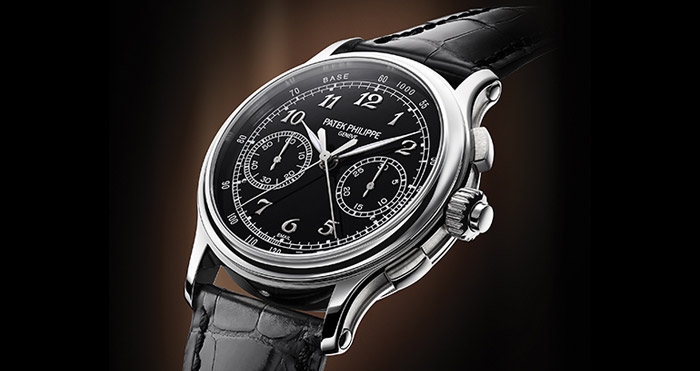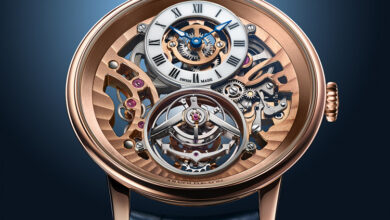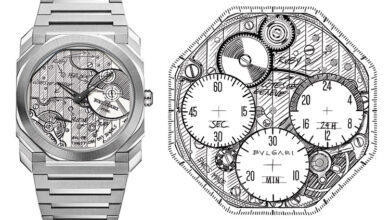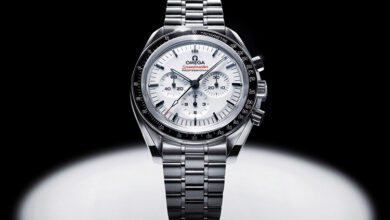Patek Philippe colours the horology world

Ranking not just among Switzerland's oldest manufactures, but also as the oldest and last independent family-owned watchmaking company in Geneva that pursues the majority of its activities on Genevan territory; Patek Philippe is a name that is synonymous with watchmaking excellence, crafting iconic timepieces that are both technically pioneering, and visually striking for almost two uninterrupted centuries
Polish immigrants, businessman Antoni Patek, and watchmaker François Czapek, initiated the business in Geneva in 1839 under the name “Patek, Czapek & Cie.”. Following Czapek’s exit, French watchmaker, Jean-Adrien Philippe, became a part of the company in 1851, and the brand ultimately took on its famous current title when it was purchased by brothers Charles and Jean Stern in 1932. Patek Philippe has since stayed in the family, assuring its notable reputation and a staggering passion for the pursuit of horological superiority.
Crafting timepieces of the highest quality and reliability, the distinctiveness and exclusivity of Patek Philippe creations makes them rare and precious pieces, an exceptional legacy that has been passed along from one generation to the next. Investment in pioneering new materials and ultramodern technology, and maintaining the time-honoured expertise and customs of Swiss watchmaking, while meeting the industry’s meticulous criteria of quality control, has proven to be a successful formula for the brand. An impressive repertoire of more than 100 patents attests to this. Patek Philippe’s main workshop is based in Geneva at Plan-les-Ouates, and the extraordinary brand has significant number of points of sales across the globe.
2015 sees Patek Philippe launching a range of fascinating new models:
Annual Calendar Chronograph
There are two complications that have proven to be most successful for the illustrious watchmaker, that of the Annual Calendar and the Chronograph. It therefore stands to reason that Patek Philippe models which include a combination of both popular complications, such as the Annual Calendar Chronographs, are a dream for watch aficionados. Variations of these models have become some of the best-selling timepieces for the brand, and this year, its latest manifestation will surely follow suit. The new Ref. 5905P Annual Calendar Chronograph is a sophisticated blend of revolutionary design and technical proficiency, it somewhat mirrors the design of the Ref. 5205 Annual Calendar launched in 2010, however Patek Philippe has brought new colours into play, in addition to other distinctive minutiae, ensuring the latest version’s originality. The beautifully finished 42mm platinum case, which was completely crafted in-house, frames a shimmering dial, which is available in colour options of blue, with matte navy alligator strap, or black, with matte black alligator strap. The exhibition case back reveals the artistically decorated movement, which combines the function of a flyback chronograph, ensuring extreme precision, with that of the Annual Calendar, a function that requires correction just once a year. Patek Philippe's patented Annual Calendars have been paragons of functionality and dependability for almost 20 years, while its wrist chronographs have ranked among the most coveted timepiece types since the 1920s.
Calatrava Pilot Travel Time
With the aim of crafting a precise and dependable timekeeping instrument with a time-zone function that is especially useful in air travel, Patek Philippe introduces the Ref. 5524 Calatrava Pilot Travel Time in 2015. The refined and masculine timepiece encases a mechanism which was patented by Patek Philippe in 1996 – with this complication, when the local-time hour hand is moved forward or backward in one-hour increments with the two pushers in the case, an isolator separates the time-zone mechanism from the going train, averting the degradation of the amplitude of the balance and allowing it to continue oscillating at a regular rate, thus enabling the watch to continue running with the accustomed accuracy. The superbly-finished self-winding calibre 324 S C FUS manufacture movement of the Calatrava Pilot Travel Time additionally boasts a sweep seconds hand, an analog date, and a heavy central rotor in 21K gold. The spectacular 294-part movement is housed in a 42mm Calatrava-style white gold case, with a flat, partially inclined bezel, which surrounds a dark navy blue lacquered dial. The home-time hour hand is skeletonized and hidden beneath the prominent local-time hour hand, provided the local and home time are identical. A separate day/night indicator is assigned to both time zones (at 9 o'clock for local time and at 3 o'clock for home time).
Split-Seconds Chronograph
In the 1920s, Patek Philippe introduced itsfirst wristwatch chronometer with an added rattrapante function (the French term for split-seconds) to much acclaim, and in 2015, it welcomes the new Ref. 5370 split-seconds chronograph, with an exceptional movement beating below a genuine black enamel dial. This two-pusher model, is essentially a sleek and distinctive stopwatch with two pushers for the basic start, stop, reset functions and an additional on/off button in the crown for the split-seconds function. The elegant and functional dial ensures complete legibility with white accented indications against a striking black background – monochrome magnificence at its best. These traditional design traits pay homage to the Manufacture’s exquisite early pocket watches. The application of the enamel to the dial involved a meticulous process, whereby a solid white gold dial is initially coated with black enamel by hand. The coating is melted in an oven at 850°C and then allowed to solidify to a glasslike consistency by controlled cooling.Small bores are then carefully drilled into the hard, yet brittle, enamel to accommodate the tiny feet of the applied white-gold Breguet numerals. Beneath the beautiful contrast of the dial is the progressive calibre CHR 29-535 PS in-house movement, a pure split-seconds chronograph that melds tradition with innovation.









